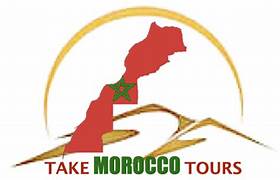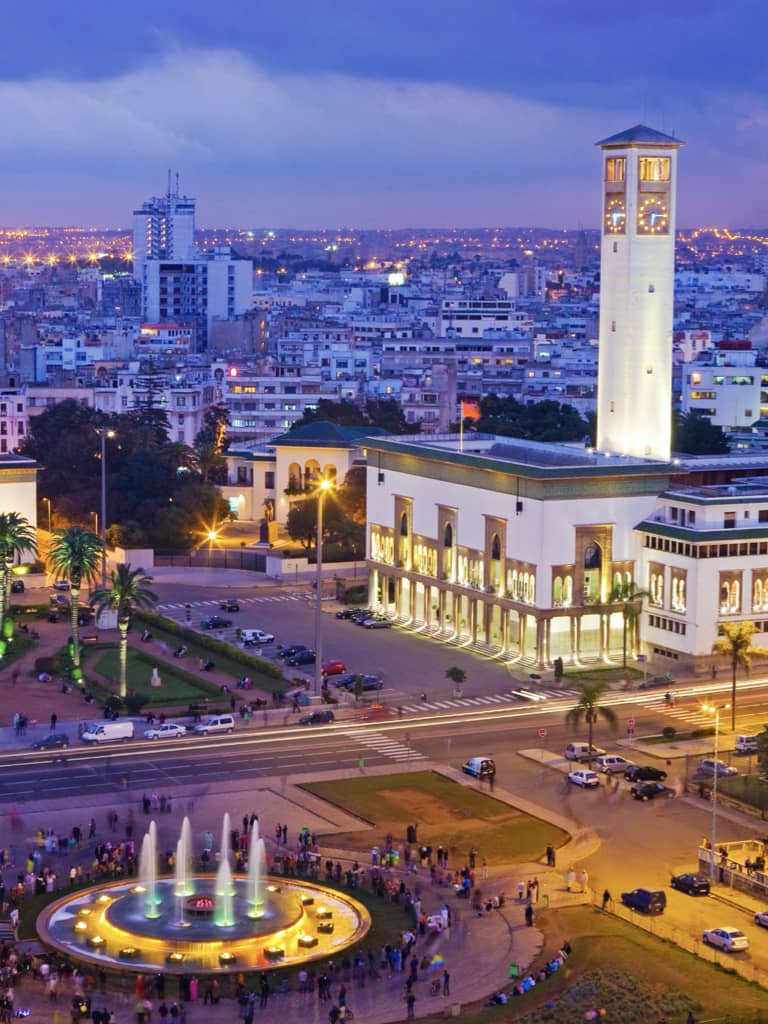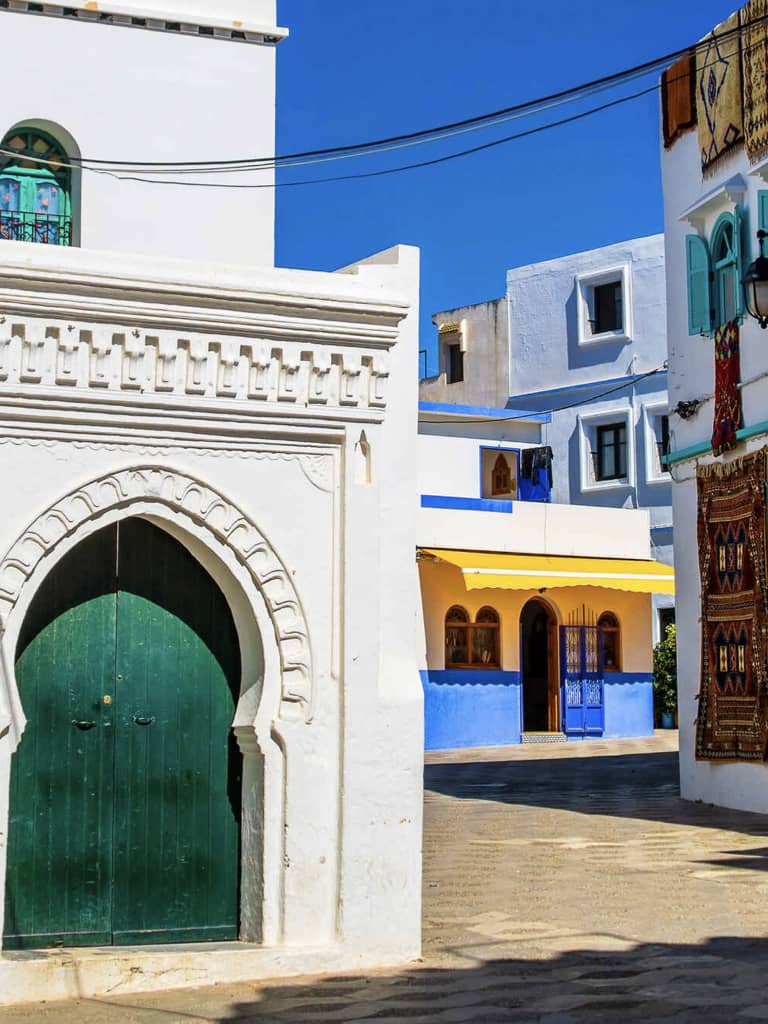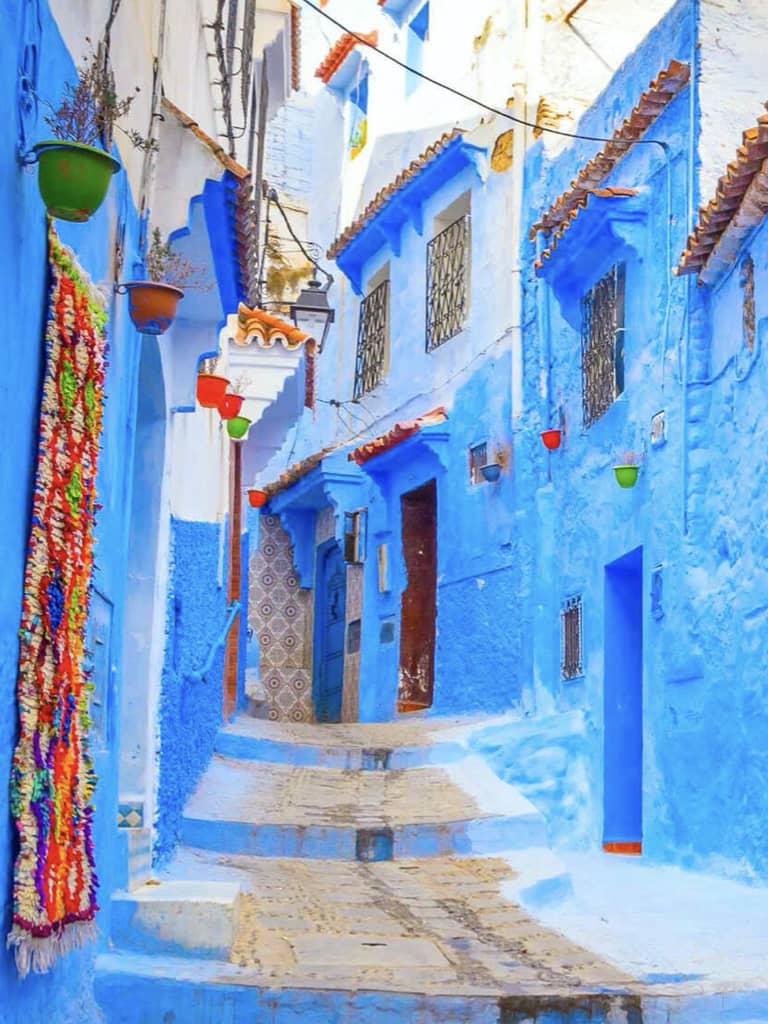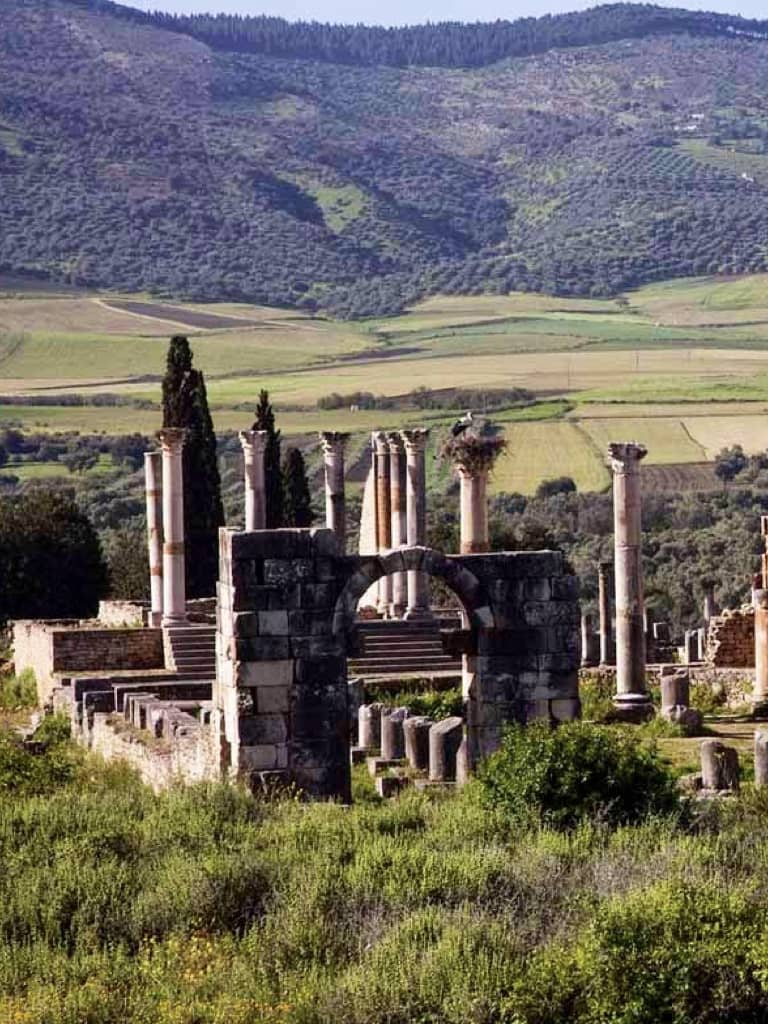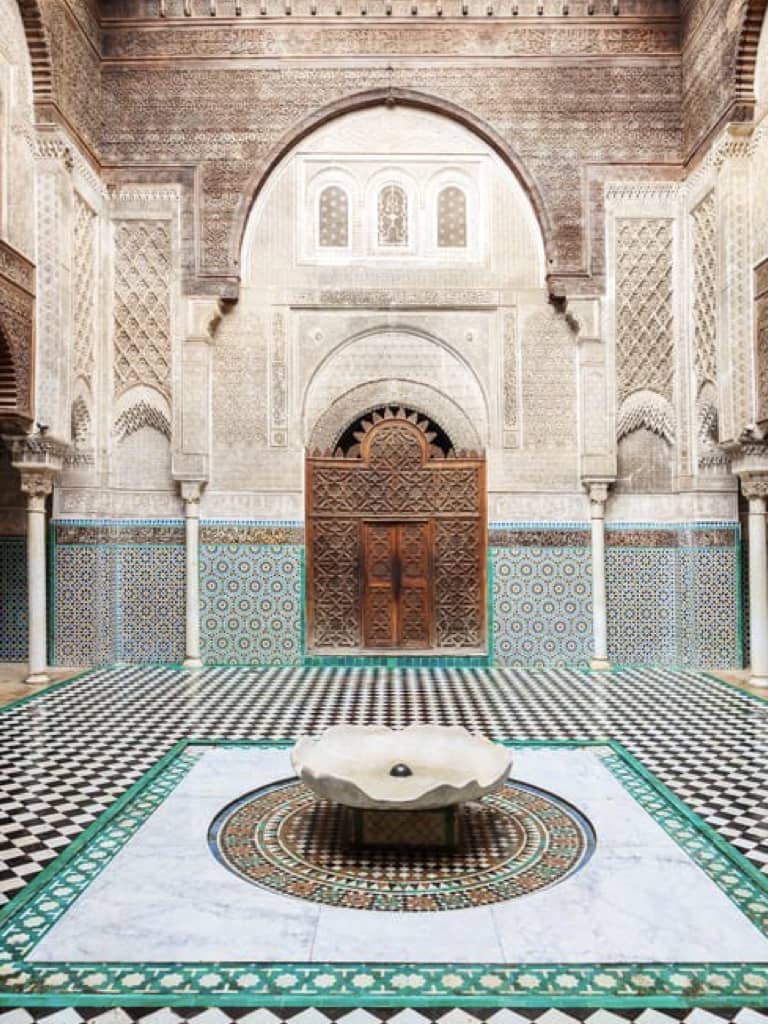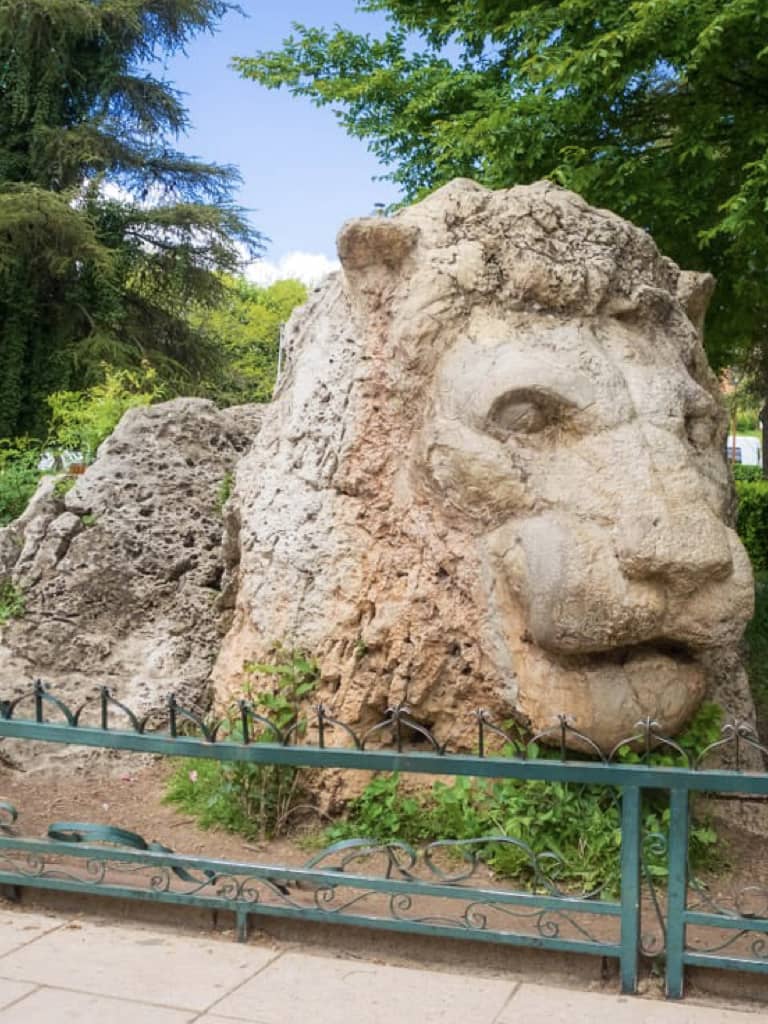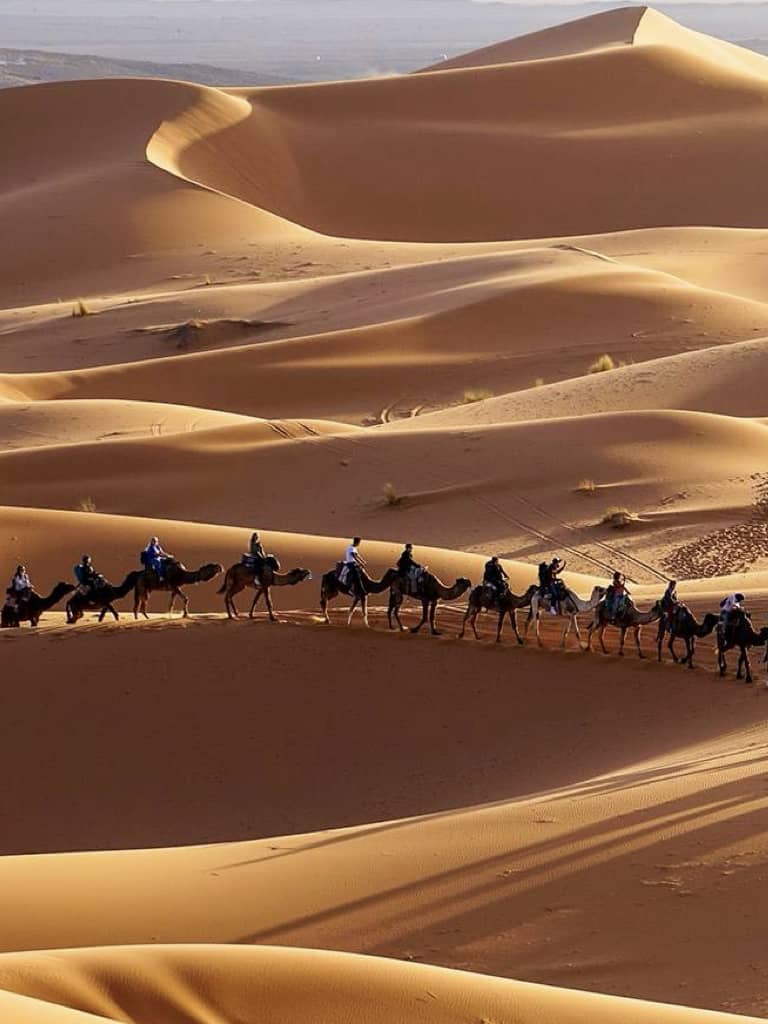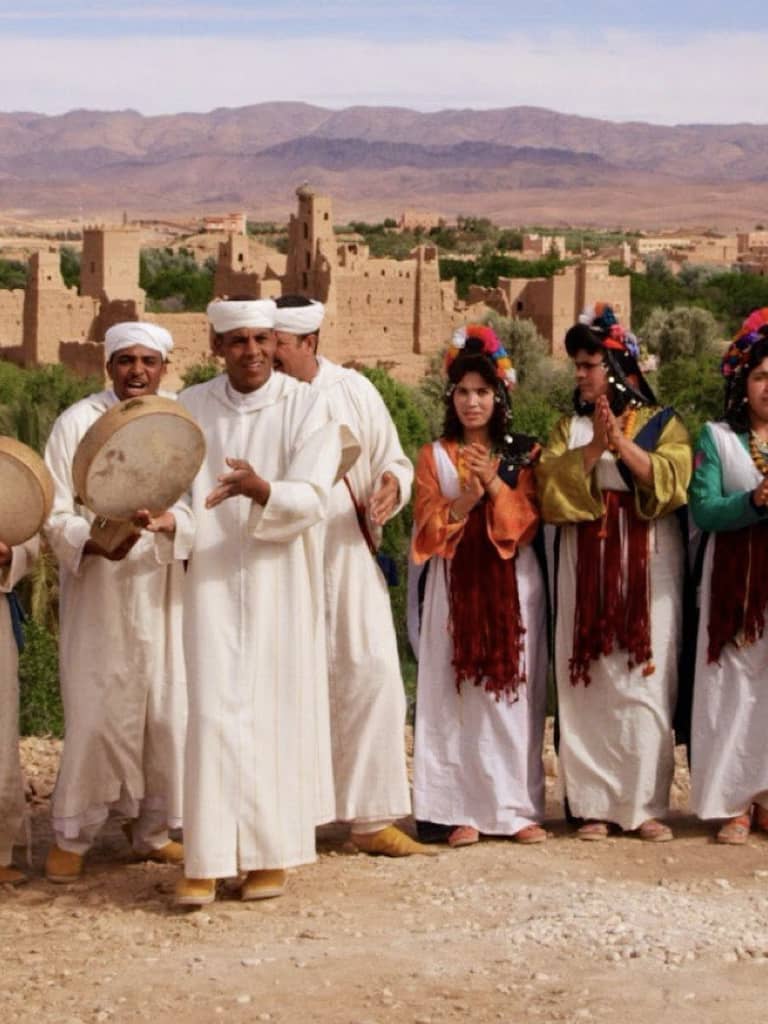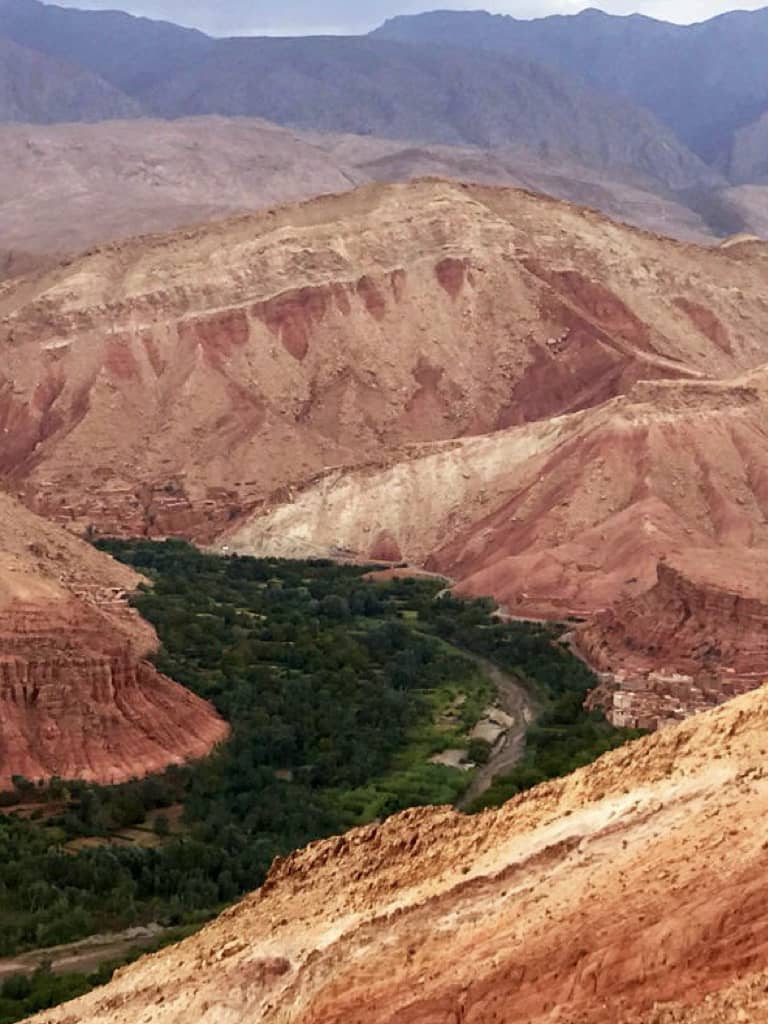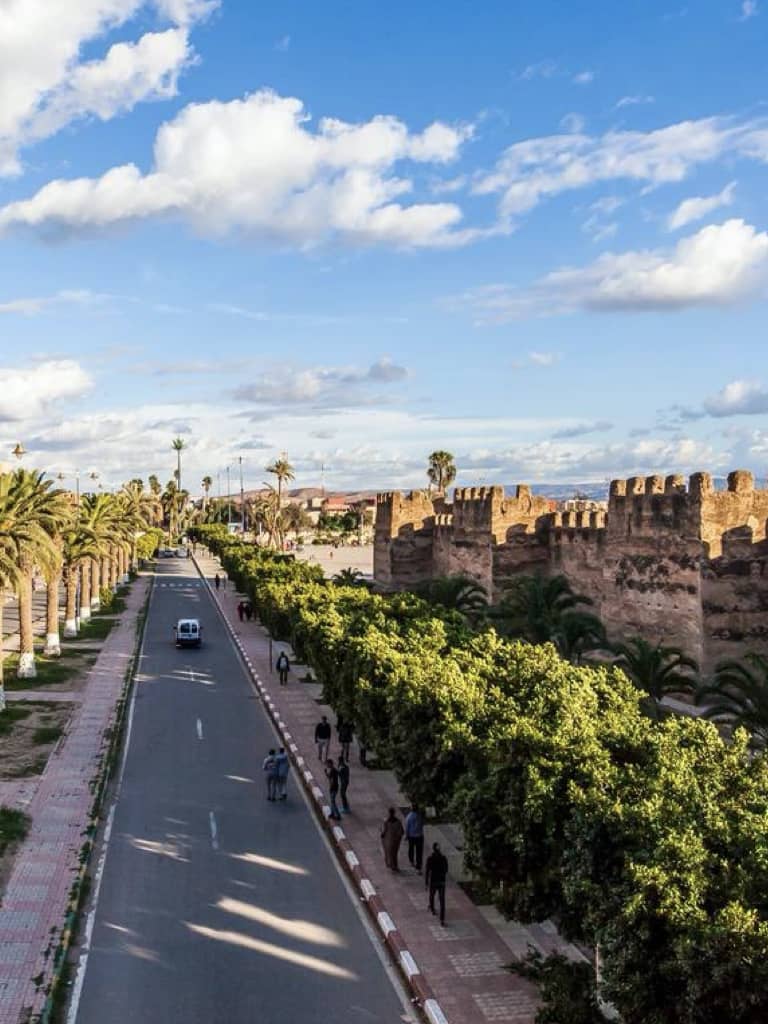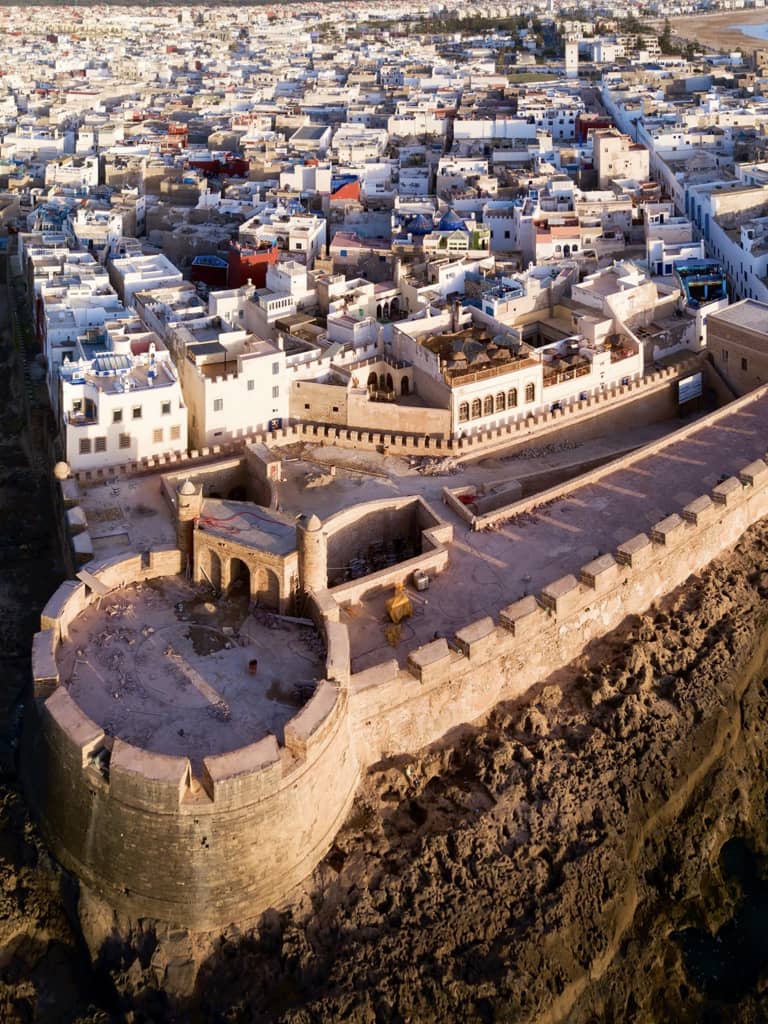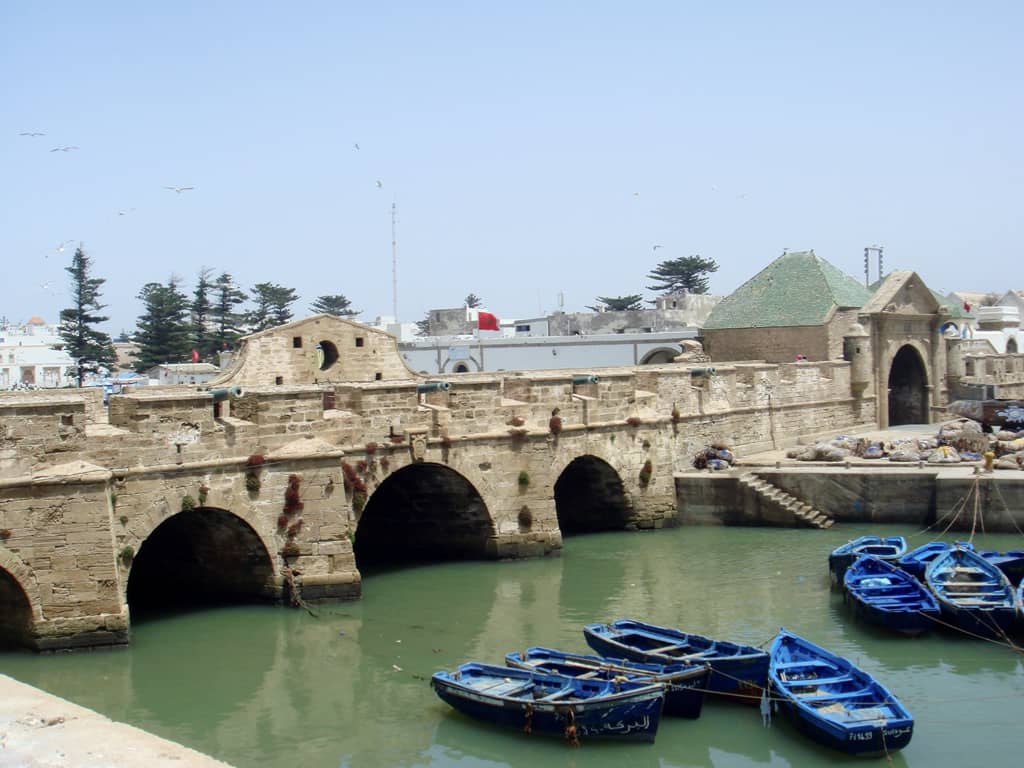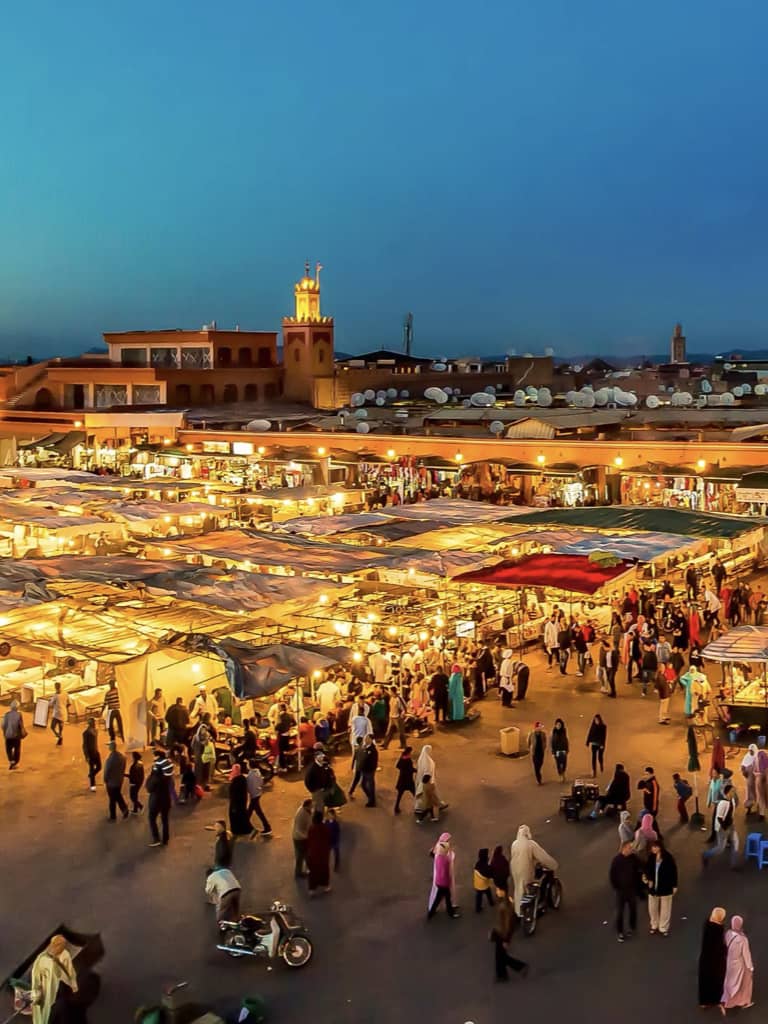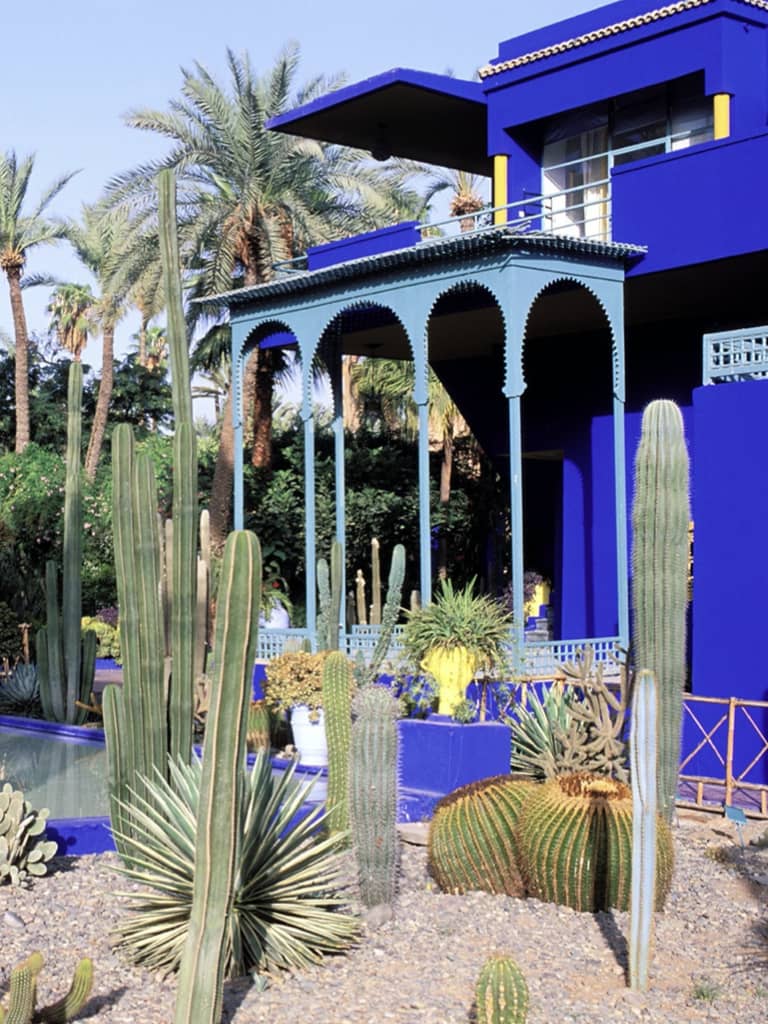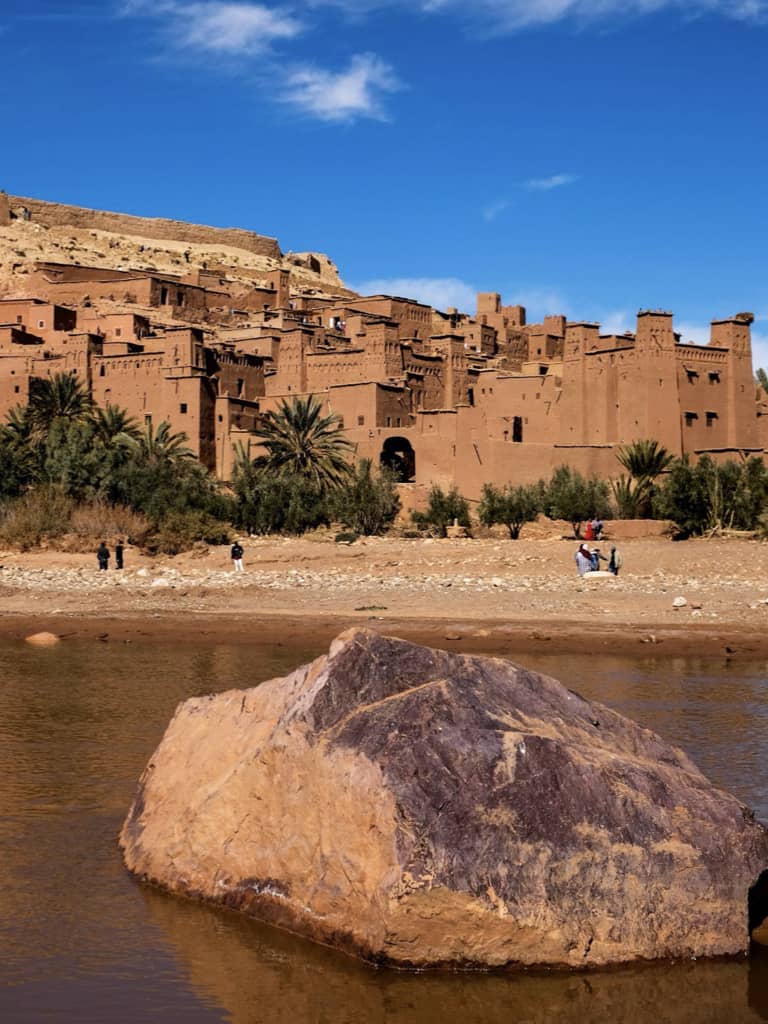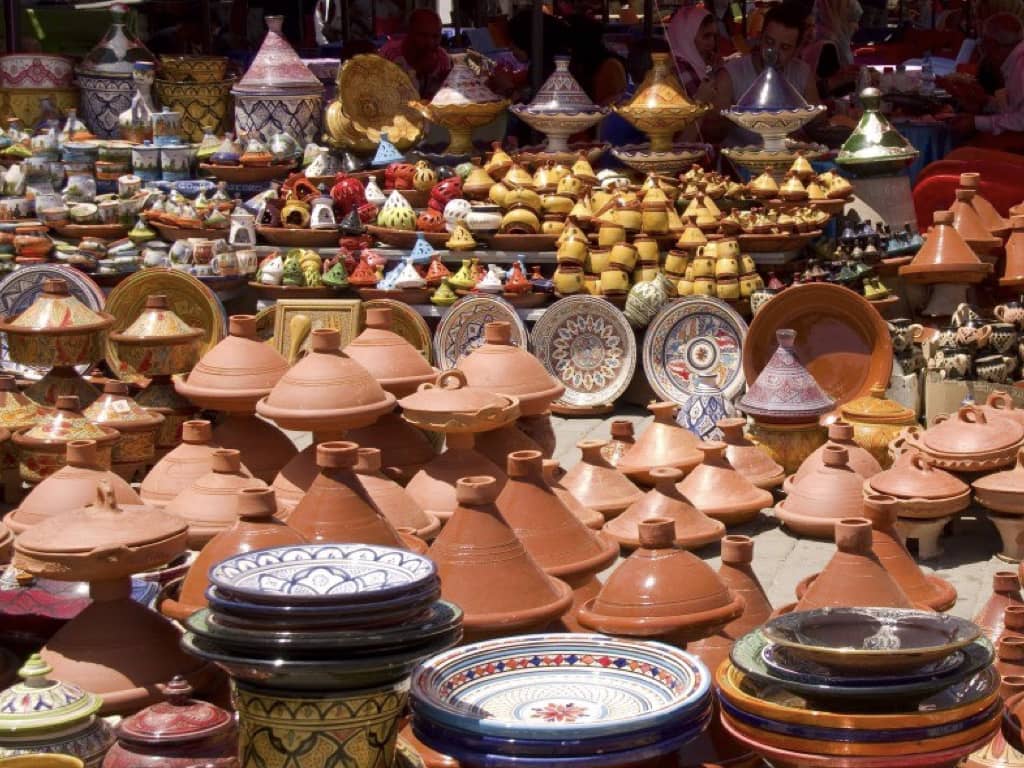16 Days in Morocco From Casablanca
Day 1: Casablanca
Meet and greet on the promenade at Mohammed V Airport in Casablanca in the thriving economic capital of Morocco – the city of Casablanca. According to the ports, followed by a visit to the magnificent Hassan ll mosque in Morocco, the highest in the world at 210 meters, completed in 1993, designed by Michel Pinseau and built by Bouygues, the minaret is 60 floors crowned by a laser . Towards Mecca, the mosque is located on a promontory facing the Atlantic Ocean, the faithful can pray on the sea but there is no glass floor facing the sea. The walls are made of marble. hand and the cap is retractable. A maximum of 105,000 faithful can gather to pray: 25,000 inside the hall of the mosque and another 80,000 in the outer enclosure of the mosque. Accommodation at the hotel
Day 2: Casablanca - Rabat - Assilah
This morning you will travel for about an hour along the coast to reach the administrative capital of Morocco. The city of Rabat is the capital of Morocco, resting along the banks of the Bouregreg and the Atlantic Ocean, it is known for its monuments which speak of its Islamic and French colonial heritage. , including the Kasbah des Oudayas. This royal fortress from the Berber era is surrounded by formal gardens and overlooks the ocean.The Hassan tower emblematic of the city, the Hassan tower is the minaret of an incomplete mosque in Rabat, started in 1195, the tower was intended to be the largest minaret in the world along with the mosque, also intended to be the largest in the world.
After the sightseeing tour of Rabat, we continue our trip to Assilah, Assilah is a city in the Atlantic Ocean of Morocco, south of Tangier. Its old town, or medina, is surrounded by well-preserved 15th-century walls and gates, built by Portuguese colonialists. The Medina is an international artistic culture of Asilah, an annual festival. Venues include the international exhibition space of the Hassan ll Rencontres Center and the Raissouni Palace from the early 20th century. Night at the Riad hotel
Day 3: Assilah - Tangier - Chefchaouen
Today you will travel to Chefchaouen via Tangier and the Rif mountains.
Tangier is a major city in northwest Morocco where the Mediterranean Sea meets the Atlantic Ocean off Cape Spartel, the city is the capital of the Tanger-Tétouan-Al Hoceima region, as well as the Tangier-Assilah prefecture in Morocco.
The Rif Mountains have been inhabited by Berbers since prehistoric times, as early as the 11th century BC the Phoenicians began to establish trading posts, with the approval of our association with the local Berbers and they began to cross paths. , thus starting a Punic language, on the Mediterranean and Atlantic coasts, and founded cities like Tetouan, Melilla, Tangier and Chefchaouen.
Chefchaouen is also known as Chaouen, it is a city in the northwest of Morocco. It is the capital of the province of the same name and stands out for its construction in shades of blue. Chefchaouen is located inside Tangier and Tetouan. Accommodation in a traditional Riad in Chefchaouen
Day 4: Chefchaouen - Volubilis - Meknes - Fez
Today we leave the blue city of Chefchaouen towards Fez via Volubilis and Meknes, today you will explore the ancient cities of Morocco, Fez, Volubilis Meknes.
Volubilis is a partially excavated Roman city in Morocco located near the city of Meknes and commonly considered the ancient capital of the Roman-Berber kingdom of Mauritania. Built-in a fertile agricultural area, it developed from the 3rd century BC. Before being the capital of the Berber kingdom of Mauritania, as a Berber and Phoenician-Carthaginian colony, it grew rapidly under Roman rule in the 1st century AD. C. until the end of the 3rd century and, (100 acres) with a 2.6 km (1.6 miles) circuit of walls. The city gained several important public buildings in the 2nd century, including a basilica, a temple, and a triumphal arch. Its prosperity, which came mainly from the cultivation of the olive tree, led to the construction of many beautiful semi-detached houses with large mosaic floors.
Meknes is one of the four imperial cities of Morocco, located in north-central Morocco and the sixth-largest city by population of the Kingdom, founded in the 11th century by the Almoravids as a military colony, Meknes became the capital of Morocco during the reign of Sultan Moulay Ismail (1672-1727), son of the founder of the Alawite dynasty. Sultana Moulay Ismail transformed Meknes into an impressive city of Hispano-Moorish style, surrounded by high walls with large doors, where the harmonious mixture of Islamic and European styles of the Maghreb of the seventeenth century is still evident today, the city has registered a population Out of 632,079 in the 2014 Moroccan census, it is the seat of the Meknes prefecture and an important economic role in the Fez-Meknes region. Night in the traditional riad in Fez
Day 5: Guided tour of Fez
Full-day guided walking tour in the old medina of Fez El-Bali with an English-speaking city guide. Your guide will lead you through the maze of souks and landmarks, visiting some of the highlights, including famous Fez pottery, musical instrument makers, metal workers, carpet souks, and Chaowara tanneries. It has more than 9000 medieval cobbled streets that wind their way through markets, mosques, Koranic schools, riads and hidden fountains. It is worth visiting the Zaouia Moulay Idriss or shrine, the ornamental gate of Bad Boujloud, the Al-Kairaouine mosque, and the university: the oldest university in the world, Al-attain Madrasa, the Nejjarine fountain, the king’s square and the neighborhood Jewish. or « Mellah ». Your guide will include as much as possible in your day. Night at the Riad
Day 6: Fez - Atlas Mountains - Ziz Valley - Erfoud
We will travel all day from Fez in the Middle Atlas Mountains to the desert city of Erfoud, the capital of fossils. Leaving from Fez, the road constantly ascends through the spectacular landscapes, you will enjoy an incredible panoramic view of the Middle Atlas. It is the homeland of the indigenous Berber tribes of Morocco, whose culture and traditions are still practiced here in the mountains. Along the route, we pass through the cedar forests of Azro, with the possibility of stopping and observing the Barbary monkeys that inhabit this area. The agricultural town of Midelt, the capital of the block, is halfway there and is a stopover for lunch. Then, continuing along the Col du Zad, we will cross the Tizi N’Tairhemt camel pass and cross the valley and gorges of the Ziz. Finally, we will pass through the Meski oasis, on the edge of the great Sahara before reaching Erfoud, known as the « door to the desert ». We will spend the night in our first fake kasbah, built in the style of the old Berber and Tuareg tribal fortresses and offering comfort, spectacular views, right on the edge of the desert. Night at the hotel
Day 7: desert tour and camel trek
It is the day we entered the Sahara proper. There is not a great distance to go (around 2 hours) so the morning is free to relax at your hotel after yesterday’s long road trip. After lunch at your hotel, we follow the Ziz River through the Tafilalt oasis and towards Rissani, the last city of any size before the sands of the Sahara. there are interesting fossil workshops and an archaeological museum to visit along the way. You can also take the tourist circuit that detours through ruined mud villages, kasbahs, and palm groves that mark the site of the ancient ruined site of Sijilmassa, once the richest city in North Africa that built its wealth thanks to trade. of caravans and gold. You may also find time to visit the Moulay Ali Shereef shrine or zaouia on the outskirts of Rissani, which is open to non-Muslims and features beautiful mosaics and carved plaster interiors for you to admire. At the end of the afternoon, you reach the desert of Merzouga, a small town on the edge of the Erg Chebbi dunes. you can choose to spend the night here in a standard or luxury class bivouac deep in the dunes, or you can sleep in a kasbah-style hotel, a traditional riad/inn, or even a dirt-filled eco-lodge on the edge of the dunes. We recommend camping in the desert to really appreciate the special atmosphere of the desert and see the incredible constellations of stars and the unforgettable sunrise over the dunes. For those who choose to discover the tranquility of the dunes, the last stage of their journey will be on the back of a camel! the night under the stars in the tent of the private desert camp
Day 8: Merzouga Desert - Todra Gorges - Dades Valley
Early breakfast at the desert camp in the heart of the Sahara desert and return by camel to meet your 4 × 4 vehicle. After our night under the stars of the desert, we leave the town of Merzouga through the ocher cliffs of the Todra gorges. , the Todra valley, the Dades valley and the Dades gorges. Our route is old and includes the Oasis of Tafilalet and the road and the valleys of thousands of kasbahs. The Todra and Dades gorges, with the High Atlas mountains to the north and the Jbel Saghro mountain range to the south, allow us to glimpse a different type of Moroccan landscape, no less spectacular, although very different from the one we have seen the previous one. days. The Todra and Dadès rivers supply water to a series of oases and palm trees in the region and we will have time to explore in the shade of the date palms and olive groves that line the banks. Our day ends in Dades Gorge, where we will spend the night in a charming guesthouse clinging to rugged cliffs or in an authentic converted kasbah in the Dades Valley with exquisite facilities and comfortable African-themed rooms. Night in the traditional riad
Day 9: Dades Valley - Valley of the Roses - Ouarzazate
From the Dades Valley, we will head to the famous Valley of the Roses and the village of Kalaat Magouna, which is home to the main production of roses and rose water in Morocco. On the way, we will leave by car to visit a nomadic colony in BouTharar where the Berber nomads Ait Atta live in caves in the rock. We will pass through the town and oasis of Skoura, where we will visit the old Berber Kasbah Amredel square and a small private museum, before ending our day in the city of Ouarzazate called Hollywood of Africa where you will visit the interior from the walls. from the old Kasbah Taourirt, in an authentic 17th-century mud house that once served as a courthouse for the Pasha el Glaoui. It has now been converted into a charming first-class guest house and is a good example of traditional building methods using local materials. Night in the traditional Riad
Day 10: Ouarzazate - Tazenakht - Taliouine - Taroudant
In the morning, you can take time for a guided tour of the restored Atlas film studios, before hitting the road again. Our route takes us to the arid regions of the Anti-Atlas Mountains and through the village of Tazenakht. Here we stop for lunch after a journey of about 2 hours; You can visit one of the co-operatives that sell the hand-woven rugs this city is famous for. . Then the route takes us for about 4 hours through Taliouin, known for its saffron cultivation and finally to the small fortified town of Taroudant in the fertile Souss Village of Taroudant which was once the capital of the Saadian Empire in the 16th century. before settling in Marrakech. and is known as the « grandmother of Marrakech ». Night in a traditional riad
Day 11: Taroudant - Agadir - Atlantic Coast - Essaouira
Our trip from the city of Taroudant to the port city of Essaouira passes through Agadir, Morocco’s main resort town, and then heads north along the rugged Atlantic coast. Along the way, you’ll spot sun worshipers, surfers, fishermen, and some of the best bananas Morocco has to offer. You will see deserted beaches and if you travel in summer, beaches filled with Moroccan families. The road crosses forests of protected thorny argan trees, where women’s cooperatives produce « Berber gold », argan oil, which extracts this precious oil from the kernels of the argan nut. We will stop for a simple lunch en route. On your arrival in Essaouira, we offer a variety of traditional riad accommodation in the 18th-century medina declared a UNESCO World Heritage Site, or you can opt for a luxury boutique hotel near the beach
Day 12: Free day Essaouira
Explore the laid back and relaxed atmosphere of Essaouira’s medina, visit the galleries to see local arts and crafts, take in the sea views from a seaside cafe, stroll along the harbor or the beach and enjoy a lunch of fresh seafood. For the more active, we can organize water sports, camel rides, quads, horseback rides, and walks in the nearby forests and beaches. We can also organize a cooking class in the morning with advance notice. Night in a traditional riad
Day 13: Essaouira - Marrakech
In the morning, we hit the road for our last trip, to the exotic and bustling “red city” of Marrakech. It is the last of the four Moroccan imperial cities that you will experience on this tour. The drive from Essaouira takes around 3 hours and once we check-in at a traditional riad in the old medina of Marrakech you will have a free afternoon to explore and relax. We suggest you go to the main square Jemaa El Fna for lunch in one of the coffee shops which have a wonderful view from the roof over the daytime activities of the bustling main square: acrobats, snake charmers, musicians, Juice. Henna sellers and artists. El resto de la tarde puede comprar gangas en el mercado cubierto más grande del mundo y puede elegir between the restaurant numbers of Marrakech para cenar, o incluso probar la fabulosa variedad de fayre en las parrillas al aire libre de la Place Jemaa el Fna por la night. Night in a traditional riad
Day 14: Guided cultural visit of Marrakech
Full day guided tour of the Imperial City of Marrakech – also known as the « Red City » for its famous pink walls. Our English-speaking city guide will meet you at your hotel in the morning and take you through the souks of the medieval medina, introducing you to artisans, bakers, carpenters, spice merchants, apothecaries and also visiting historical monuments, such as the Medersa from Ben Youssef, the Bahia Palace and the Koutoubia Mosque. Your tour ends at the famous Jemaa el Fna square. The rest of the day is free or we suggest you take a horse-drawn carriage to the new town of Gelize to visit the magnificent Majorelle Garden, formerly owned by Yves St. Laurent and originally the private home of the painter Jacques Majorelle. We suggest you return to the square to dine at one of the outdoor grills to taste everything, grilled meats, fried fish, fried aubergine, boiled snails, harira soup, spicy ginger tea, boiled lamb and other local specialties. Even if you decide to eat elsewhere, the Jemaa el Fna experience at night is intoxicating: with the smoke swirling from the doors, the throbbing rhythms of the buskers, the call to prayer echoing from the mosques like the disheartened crowd. that gathers for this nocturnal « circus ». Night in a traditional Riad
Day 15: Day trip to the High Atlas Mountains
Our day trip will start at 8:30 am to Kasbah Ait Benhaddou. with an approximate return time around 6:00 p.m. The tour passes through the Atlas Mountains, so you can enjoy beautiful scenery with local villages and surrounding elevated landscapes during your trip. After a few hours of driving, we will arrive at Kasbah Ait Benhaddou, which is an old building to explore.
Where many movies have been shot including shoot a film. Films such as Lawrence of Arabia (1962), The Living Daylights (1987), The Last Temptation of Christ (1988), The Mummy (1999), Gladiator (2000), Kingdom of Heaven (2005), Kundun (1997), Legionnaire ( 1998), Hanna (2011) and Salmon Fishing in the Yemen (2011) were filmed there. During the tour we have a lot to see and do during your day. Return to Marrakech
What is included
Full Private car with A/C
Professional driver/guide
16 days & 15 nights dinner & breakfast
Camel Trekking in Sahara Desert Merzouga
local expert guide in Marrakech & Fes
What’s not included
Lunch
Drinks
Tips
Personal expenses
